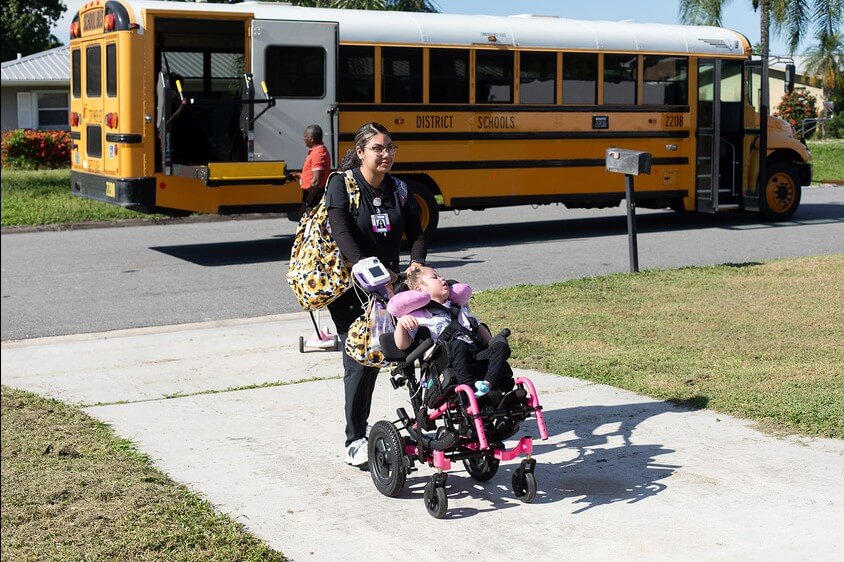School administrators may need to secure private contract speech therapists to ensure adequate staffing for buildings. These services can have costs that are not readily apparent. This White Paper outlines four potential expenses related to contract staffing.
School administrators are expected to recruit and ensure adequate staffing of speech pathologists for buildings and programs within their district. Speech pathologists have many options for work outside of school settings. In addition, because of the complex demands of working in the schools, limited peer collaboration (feelings of isolation), and limited financial prospects, many speech pathologists choose to work in alternative environments. These factors can result in shortages of speech pathologists to hire. To fill building needs, school administrators often rely on contract agencies to address short and long-term needs within a school district.
4 Hidden Costs of Contract Services for SLPs
Private contract services often present as financially daunting, but additional costs may not be readily apparent. This white paper outlines four potential hidden costs school administrators should be aware of when turning to contract services.
Hidden Cost #1: Being Prohibited from Retaining your SLP post-contract as an employee
Contracting SLP services may be viewed as a potential recruitment resource. If a school district works with a speech pathologist on contract they have the opportunity to review their work and assess if they would be a good fit for their school district’s culture. With any new staff member, employee or contractor, the district makes a significant investment in training, security, and mentoring. With employees, that investment is made up for over the lifetime of a stable employee.
If a contracting SLP is viewed to be a good fit by school district leadership, ideally they would like to offer the SLP an employment position. Unfortunately, most contract agencies prohibit their SLPs from considering employment with a school district with whom they have recently worked. Some agencies require the equivalent of a headhunter’s fee to release the SLP from this mandate. Some fees to districts could equate to a year’s salary.
This no-compete clause is not in the best interests of students but does provide a private company with protection from losing their potential labor pool. There are exceptions to this practice.
As a cost savings, school district administrators should work with agencies that would allow them to hire anyone with whom they have previously contracted, at no additional expense.
Hidden Cost #2: Not having influence on who may come once a contract is established
Unfortunately for school district leadership, contract agencies often establish a contract for services without first giving school district administration the option to meet and/or interview several speech pathologists to determine who may be the best fit for their educational community. Contract terms typically state that assigned SLPs will meet minimum qualifications and credentials. Beyond that, district leadership has little influence as to who may be assigned to their district.
Naturally, the majority of SLPs with appropriate credentials (typically ASHA CCCs) and state licensing can be counted on to ensure the SLP will be competent and capable. However, the hidden cost to districts in not being able to choose the contract SLP from a pool of candidates is losing the option to choose the most qualified SLP for the identified caseload. Also, the district may be handed a SLP just finishing school.
SLPs new to the field or only familiar with particular populations will require additional resources or training from the district to understand building or district expectations. Most importantly, the ultimate hidden cost is paid by students. Less experienced SLPs are simply not as efficient in identifying priorities and how to address them nor highly skilled in communicating with demanding parents.
As a cost savings, school district administrators should work with contract agencies that will allow district leadership to interview multiple candidates for any potential position.
Hidden Cost #3: When Your SLP is not providing Student-Centered Intervention
Although an immediate district goal for contracting a SLP is to ensure students receive service, a hidden, yet significant, cost to districts may be the orientation of the service a student receives from the contract SLP. For example, the greatest objective a school-based SLP should have is relating IEP goals and objectives to general education expectations. Intervention or therapy with the SLP should be strategy development that is structured to generalize to the student’s classroom. If these efforts are not typical practice for the contract SLP secured, the district may receive a great deal of pull-out service with little progress in relationship to classroom expectations.
Student-centered service that is focused on developing growth within the classroom requires not only the effort to work with a student (and a grasp of how service translates between environments) but a willingness and skill set to work collaboratively with classroom teachers to support and nurture their efforts with students with special needs. Unfortunately, it is possible to do an adequate job that results in progress on the IEP but still not see those skills generalized to classroom domains or school district standardized testing. This hidden cost is unfortunately paid directly by the student.
As a cost savings, school district administrators should work with contract agencies that can ensure their SLPs are familiar with and practice intervention or therapy with the intention of translating that into general education classroom results.
Hidden Cost #4: Teletherapy and the impact on the rest of your staff
In the last few years there have been increased opportunities for districts to utilize teletherapy (broadcasting a clinician into a school via video conferencing to work with students needing therapy). Teletherapy is specifically designed to support students in a 1:1 virtual environment. Research does support that teletherapy is a viable option to provide clients service and growth can be made. However, within a school district, this model can have a ripple of negative consequences not frequently advertised.
Teletherapists work directly with some of the students on the caseload one to one. However, students still need an adult present in the room at the school level to ensure adequate supervision. Professionally, even SLPs utilizing teletherapy will tell you that not all students needing service will be appropriate candidates for teletherapy. And at this time, evaluation cannot be done virtually. There are no comprehensive standardized test batteries that can be implemented online.
The result is contract SLPs may be able to serve some students but the balance of a building’s workload must then be shifted to remaining district SLPs already on staff. Current staff often see their own workload responsibilities increase as they become responsible for that assignment’s testing, paperwork, and meeting requirements. Adding additional responsibilities to a current employee can be cause for complaints by employee unions but also breed resentment among staff, ultimately leading them to seek another position elsewhere that better manages workload responsibilities equitably.
As a cost savings, school district administrators should work with contract agencies that place a SLP on-site for a part of every month. Nothing can replace the value of on-site, quality direction and consultation to support staff and general education teachers. Parents appreciate the opportunity to meet the SLP face-to-face in meetings and students can better understand the connection between their work in a virtual environment and expectations within their general education classroom.





